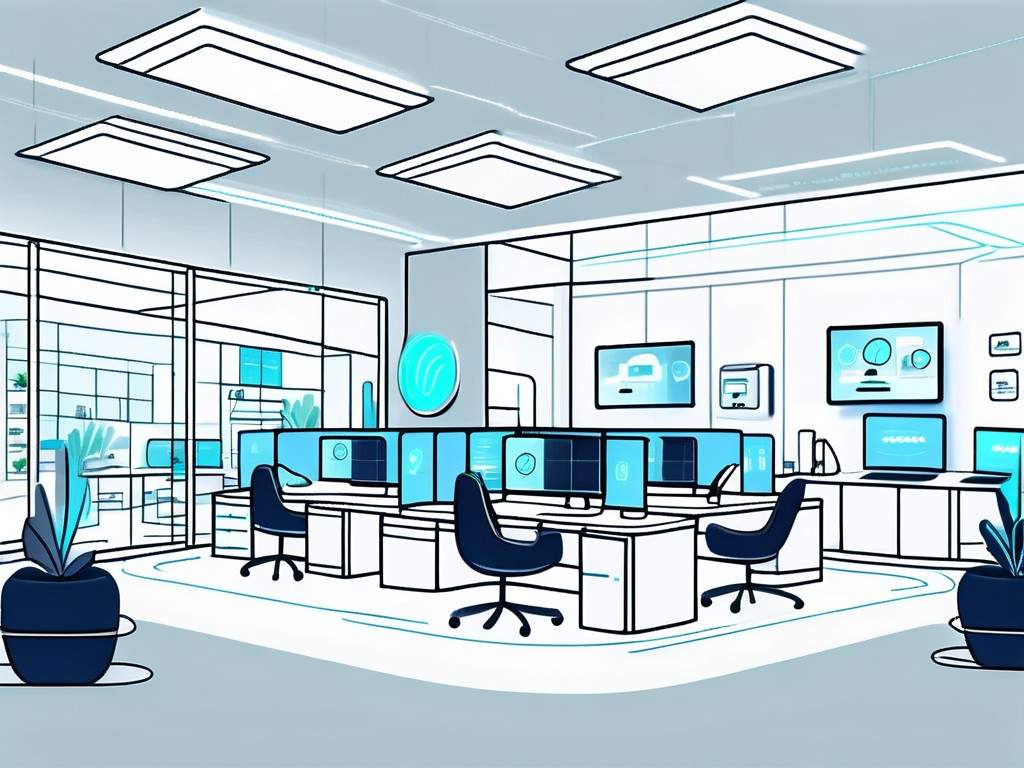The role of technology in childcare administration is increasingly significant as it enhances efficiency and effectiveness within the industry. Childcare providers face numerous challenges that require innovative solutions. By understanding these challenges and leveraging technology, childcare institutions can improve their administrative functions and ultimately focus more on the delivery of quality care.
Understanding the Challenges in Childcare Administration
Childcare administration encompasses a wide range of tasks, each of which requires attention to detail, organization, and a significant amount of time. Understanding these challenges is crucial for developing strategies that effectively address them. The intricate dynamics of childcare management can create obstacles that hinder optimal service delivery.

The Complexity of Childcare Management
Childcare management involves monitoring child development, ensuring compliance with regulations, managing staff, maintaining records, and communicating with parents. Each of these areas not only requires specific knowledge but also continuous management to meet the diverse needs of children and families. This complexity often leads to challenges in coordination, scheduling, and maintaining up-to-date records.
In addition to administrative duties, childcare providers also face external pressures such as new regulations, funding requirements, and community engagement. These variables further complicate the management landscape and make it apparent that streamlined processes are necessary. Furthermore, the emotional and psychological aspects of childcare cannot be overlooked. Providers must also navigate the varying expectations of parents, which can differ significantly based on cultural backgrounds and personal beliefs about child-rearing. This adds another layer of complexity to an already multifaceted role.
Schedule a free 30-minutes session with us!
The Need for Efficiency in Childcare Administration
Efficient childcare administration is essential to not only adhere to regulations but also to foster an environment where children can thrive. Inefficiencies can result in lost time, errors, and ultimately a decline in the quality of care delivered. By seeking ways to improve these operations, childcare facilities can better dedicate resources to child development activities.
The importance of efficiency extends to parent communication and staff management as well. An organized administration allows for timely updates, which are crucial for maintaining trust and transparency with parents. Moreover, effective staff management is vital for ensuring that educators are not only well-trained but also motivated and engaged in their roles. Regular training sessions and feedback loops can enhance staff performance and job satisfaction, which in turn positively impacts the children in their care. Overall, optimizing event planning, regulatory compliance, and daily operations through technology can significantly lighten the administrative load, allowing for a more focused approach to nurturing and educating young minds.
The Intersection of Technology and Childcare
The utilization of technology within the childcare sector has seen notable evolution over the years. This intersection brings exciting prospects for both providers and families alike, enhancing the quality of care and operations within childcare settings.
The Evolution of Technology in Childcare
The journey of technology in childcare began with rudimentary systems for managing records and communication. Over the last two decades, the rise of digital tools has transformed the way childcare facilities operate. From simple databases to sophisticated management software, these advancements have streamlined many of the previously manual processes.
For instance, early childcare centers often relied on paper-based methods for enrollment and billing, which were prone to errors. Today, many facilities utilize cloud-based management systems that allow for real-time updates and easy access to information. This evolution has addressed some of the significant challenges that hindered efficiency and accuracy.
Moreover, the integration of technology has also paved the way for enhanced safety measures within childcare environments. Many centers now employ security systems that utilize facial recognition and biometric access controls to ensure that only authorized individuals can enter the premises. This not only provides peace of mind to parents but also creates a safer atmosphere for children to learn and grow.
Current Technological Innovations in Childcare
Today’s childcare administration benefits from various technological innovations. These include mobile apps for parent communication, online billing systems, and management software that integrates scheduling and reporting functionalities.
Advanced communication tools also enable caregivers to share updates and real-time information with parents, fostering a community of trust that is crucial for child welfare. Furthermore, automated scheduling systems can help staff align their availability with the needs of the center, thus reducing the workload on administrative personnel.
In addition to these innovations, the use of educational technology in the classroom has begun to flourish. Interactive learning platforms and digital resources have made it easier for educators to engage children in a fun and meaningful way. For example, tablets equipped with educational apps can provide personalized learning experiences that cater to the individual needs of each child, allowing them to progress at their own pace. This not only enhances cognitive development but also encourages a love for learning from a young age.
The Impact of Technology on Childcare Administration
As childcare institutions increasingly embrace technology, the impacts are becoming evident across several operational dimensions. These technological enhancements offer immense benefits that resonate through the entire organization.

Enhancing Communication and Collaboration
One of the most significant impacts of technology is enhanced communication. With the rise of messaging apps and platforms, providers can easily relay information to parents about their children’s daily activities, milestones, or any emergencies. This real-time communication fosters a partnership between parents and educators, which is essential for child development.
Collaboration among staff members is also improved through shared platforms that allow for easy access to important documents and communicate efforts in caring for children. A collective approach makes it simpler to plan activities and manage daily operations effectively. Additionally, the use of collaborative tools such as shared calendars and project management software enables staff to coordinate more efficiently, ensuring that everyone is on the same page regarding schedules, events, and responsibilities. This increased transparency not only boosts morale among staff but also enhances the overall quality of care provided to the children.
Schedule a free 30-minutes session with us!
Simplifying Scheduling and Planning
Scheduling is one of the most daunting tasks in childcare administration. With multiple caregivers, children, and external appointments to juggle, it can quickly become overwhelming. Technology helps streamline this process by providing scheduling tools that allow for easy adjustments and visibility into staff and child availability.
This simplification of scheduling also extends to planning educational programs and activities, ensuring that resources are allocated efficiently and in a timely manner. Administrators can allocate staff accordingly, ensuring that every child receives attention and care tailored to their needs. Furthermore, technology can facilitate the integration of lesson plans with the children’s interests and developmental goals, allowing for a more personalized approach to learning. This adaptability not only keeps children engaged but also promotes a more enriching educational environment.
Improving Data Management and Reporting
Effective data management is crucial for compliance, operational analysis, and performance evaluation. Technology provides daycare centers with tools to track important metrics and generate reports automatically, reducing the administrative burden significantly.
With enhanced data management, childcare providers can analyze trends in enrollment, attendance, and even child development outcomes. This capability supports strategic decision-making and helps facilities comply with licensing and accreditation requirements. Moreover, the ability to collect and analyze data over time allows childcare administrators to identify areas for improvement and implement evidence-based strategies to enhance service delivery. For instance, by examining attendance patterns, providers can adjust staffing levels during peak times or introduce new programs that align with families’ needs, ultimately leading to a more responsive and effective childcare service.
Overcoming Barriers to Technology Adoption in Childcare
Despite the many advantages, there are still barriers to the widespread adoption of technology in childcare administration. Understanding these obstacles is essential for driving change within the industry.
Addressing Technological Literacy
A significant barrier that childcare facilities face is the varying levels of technological literacy among staff. While some individuals may be comfortable navigating digital tools, others may struggle with new systems. This disparity can slow down the adoption process and create resistance to change.
To overcome this, targeted training programs should be implemented, offering comprehensive instruction on using new technologies. Encouraging a culture of continuous learning and support can also help staff feel more confident and competent in utilizing technological advancements.
Ensuring Data Security and Privacy
Another essential consideration is data security and privacy. Childcare centers handle sensitive information about children and families, making it imperative to ensure that the technology used complies with privacy regulations and adequately protects this data.
Providers need to conduct thorough assessments of the technology they implement, ensuring that it meets security standards and that staff are trained to handle data responsibly. This vigilance is crucial in building trust with parents and maintaining the integrity of the childcare organization.
The Future of Technology in Childcare Administration
The future of technology in childcare administration looks promising, as continued advancements are expected to revolutionize the landscape even further. Embracing this future will be crucial for childcare providers aiming to remain competitive and effective.

Predicted Technological Advancements
Predictions for technology in childcare include the integration of artificial intelligence and data analytics to provide tailored educational experiences for children. Additionally, the rise of virtual reality might allow for immersive learning experiences, enhancing child engagement and understanding.
Moreover, improvements in communication tools are expected to enhance parent-provider relationships even further, ensuring that everyone remains informed and involved in shared decision-making regarding child development.
Preparing for a Tech-Driven Future in Childcare Administration
To prepare for this tech-driven future, childcare centers must invest in ongoing training, infrastructure updates, and strategic planning. By doing so, they can ensure that they are equipped to adapt and harness the full potential of technology as it continues to evolve.
Ultimately, embracing technology should not merely be seen as a means to reduce administrative burden but as an opportunity to enhance the overall quality of childcare services. By doing so, centers can continue to provide exceptional care while navigating the complexities of growing regulatory demands and parents’ expectations.
